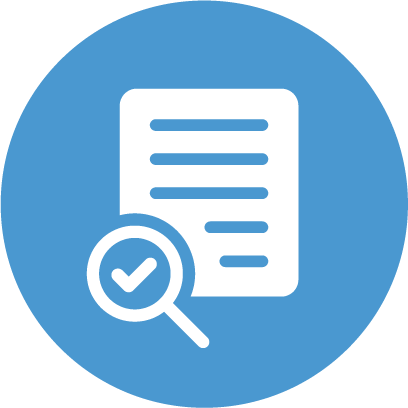
We have identified the following three sub-practices of understanding systems with computational models:
Explore the resources below to consider how to integrate computational models in your classroom.
Our teacher partner from Vancouver Public Schools helped students to use, modify, and create computational models to explore scientific phenomena in her middle school science class.
 “I always have students create 1-3 ‘I wonder’ questions related to the topic we are discussing. Then they explore a computational model to test out their questions. That was the number one component that engaged kids. Several students from my class chose to create a model on alternative energy sources. One student created a windmill. He changed the number of blades, wind direction and speed of the wind, which all affected how it worked.” – Teacher, Vancouver Public Schools
“I always have students create 1-3 ‘I wonder’ questions related to the topic we are discussing. Then they explore a computational model to test out their questions. That was the number one component that engaged kids. Several students from my class chose to create a model on alternative energy sources. One student created a windmill. He changed the number of blades, wind direction and speed of the wind, which all affected how it worked.” – Teacher, Vancouver Public Schools
![]()
Teachers will know students are understanding systems with computational models because they may observe the following student actions:
Using and Modifying Computational Models to Explore a Driving Question
Creating Computational Models
Assessing Computational Models

Ask students to engage in understanding systems with computational models and/or reflect on their process or progress with these prompting questions:
![]()
Explore examples of middle school science activities integrated with computational thinking practices. Although the examples are topic-specific, templates are available for you to design opportunities in different topics or contexts.
In this example, a student used a computational model to explore a question about disease transmission and social distancing practices. Explore the resource to see how the student used a computational model to answer a driving question.
Want to do something like this in your classroom? Use or adapt this template as a resource to design opportunities for your students to use and modify computational models.
In this example, a student created a model of factors that may affect the buoyancy of a submarine. Explore the resource to see how the student created this computational model.
Want to do something like this in your classroom? Use or adapt this template as a resource to design opportunities for your students to create computational models.

The following rubrics outline components of understanding systems with computational models that can be utilized to assess student work.
| "Yes" | "Almost" | "Not Yet" | |
|---|---|---|---|
|
System Description |
Fully describes the system being simulated in the chosen model and identifies the parts of the system included within the model. |
Provides general information but insufficient details about the system being simulated in the chosen model and identifies the parts of the system included within the model. |
Does not describe the system being simulated in the chosen model nor identifies the parts of the system included within the model. |
|
Driving Question |
Identifies a clear and measurable driving question based on the chosen computational model. |
Identifies a driving question, but it is not specific or cannot be measured by the chosen computational model. |
Does not identify a driving question. |
|
Data Collection |
Collects multiple data points through the model that answer the identified driving question. |
Collects multiple data points, but those data points do not answer the driving question. |
Does not collect data through the model. |
|
Data analysis |
Analyzes data to draw meaningful insight to the driving question. |
Analyzes data, but analysis is unrelated to the driving question. |
Does not synthesize data. |
|
System Description |
|
| "Yes" |
Fully describes the system being simulated in the chosen model and identifies the parts of the system included within the model. |
| "Almost" |
Provides general information but insufficient details about the system being simulated in the chosen model and identifies the parts of the system included within the model. |
| "Not Yet" |
Does not describe the system being simulated in the chosen model nor identifies the parts of the system included within the model. |
|
Driving Question |
|
| "Yes" |
Identifies a clear and measurable driving question based on the chosen computational model. |
| "Almost" |
Identifies a driving question, but it is not specific or cannot be measured by the chosen computational model. |
| "Not Yet" |
Does not identify a driving question. |
|
Data Collection |
|
| "Yes" |
Collects multiple data points through the model that answer the identified driving question. |
| "Almost" |
Collects multiple data points, but those data points do not answer the driving question. |
| "Not Yet" |
Does not collect data through the model. |
|
Data analysis |
|
| "Yes" |
Analyzes data to draw meaningful insight to the driving question. |
| "Almost" |
Analyzes data, but analysis is unrelated to the driving question. |
| "Not Yet" |
Does not synthesize data. |
| "Yes" | "Almost" | "Not Yet" | |
|---|---|---|---|
|
Identify a quantifiable system |
Describes in detail the systems they are modeling, such as what led them to this system and why it is fitting for creating a model. |
Provides general information but insufficient details about what led to this system and why it is fitting for creating a model. |
Does not describe the system, what led to this choice, and why it is relevant. |
|
Identify component parts of a system |
Describes in detail the component parts of the system chosen and breaks down effectively the parts of the system. |
Provides general description of component parts of the system, but not in enough detail, or does not effectively describe parts of the system. |
Does not describe the component parts of the system. |
|
Identify relationships in a system |
Identifies in detail the relationships in a system, including relevant mathematical relationships. |
Provides general identification of the relationships in a system. |
Does not identify the relationship in the system. |
|
Computational Model |
Provides complete evidence of the computational model. At least 10 screenshots or a video of the model working and includes model creation process. |
Provides insufficient evidence, less than 10 screenshots or a video of the model working, and does not include the model creation process. |
Provides incomplete evidence. There are no screenshots, videos, or photos of evidence of a working computational model. |
|
Explanation |
Describes in detail how the model was created, what led them to this tool for model creation, and how the model works. |
Provides general information but insufficient detail about how the model was created, what led to this tool for model creation, or how the model works. |
Does not describe how the model was created, what led to this tool for model creation, or how the model works. |
|
Identify a quantifiable system |
|
| "Yes" |
Describes in detail the systems they are modeling, such as what led them to this system and why it is fitting for creating a model. |
| "Almost" |
Provides general information but insufficient details about what led to this system and why it is fitting for creating a model. |
| "Not Yet" |
Does not describe the system, what led to this choice, and why it is relevant. |
|
Identify component parts of a system |
|
| "Yes" |
Describes in detail the component parts of the system chosen and breaks down effectively the parts of the system. |
| "Almost" |
Provides general description of component parts of the system, but not in enough detail, or does not effectively describe parts of the system. |
| "Not Yet" |
Does not describe the component parts of the system. |
|
Identify relationships in a system |
|
| "Yes" |
Identifies in detail the relationships in a system, including relevant mathematical relationships. |
| "Almost" |
Provides general identification of the relationships in a system. |
| "Not Yet" |
Does not identify the relationship in the system. |
|
Computational Model |
|
| "Yes" |
Provides complete evidence of the computational model. At least 10 screenshots or a video of the model working and includes model creation process. |
| "Almost" |
Provides insufficient evidence, less than 10 screenshots or a video of the model working, and does not include the model creation process. |
| "Not Yet" |
Provides incomplete evidence. There are no screenshots, videos, or photos of evidence of a working computational model. |
|
Explanation |
|
| "Yes" |
Describes in detail how the model was created, what led them to this tool for model creation, and how the model works. |
| "Almost" |
Provides general information but insufficient detail about how the model was created, what led to this tool for model creation, or how the model works. |
| "Not Yet" |
Does not describe how the model was created, what led to this tool for model creation, or how the model works. |
| "Yes" | "Almost" | "Not Yet" | |
|---|---|---|---|
|
Describes the parts of the system and the relationships clearly |
Describes in detail the parts of the system and the relationships demonstrated in the model. |
Provides general information but insufficient details about the parts of the system and the relationships demonstrated in the model. |
Does not describe the parts of the system used and the relationships demonstrated in the model. |
|
Model Representation of Real-Life System and Similarities and Differences Between Model and Real-Life System |
Describes in detail how this model represents the real-life system. Includes both similarities and differences between the model and real-world system. |
Provides general information but insufficient details about how this model represents the real-life system. Includes either similarities or differences between the model and real-world system |
Does not describe how this model represents the real-life system. Does not include similarities and differences between the model and real-world system. |
|
Describes the parts of the system and the relationships clearly |
|
| "Yes" |
Describes in detail the parts of the system and the relationships demonstrated in the model. |
| "Almost" |
Provides general information but insufficient details about the parts of the system and the relationships demonstrated in the model. |
| "Not Yet" |
Does not describe the parts of the system used and the relationships demonstrated in the model. |
|
Model Representation of Real-Life System and Similarities and Differences Between Model and Real-Life System |
|
| "Yes" |
Describes in detail how this model represents the real-life system. Includes both similarities and differences between the model and real-world system. |
| "Almost" |
Provides general information but insufficient details about how this model represents the real-life system. Includes either similarities or differences between the model and real-world system |
| "Not Yet" |
Does not describe how this model represents the real-life system. Does not include similarities and differences between the model and real-world system. |
![]()
Explore this curated list of supports to implement, explore, and promote computational thinking practices in your classroom.
Students can use and modify models they created using any of the “Creating Computational Models” tools above. The following three platforms afford the opportunity to create your own model, but may be challenging for middle school students to navigate individually. On these platforms, we suggest teachers creating computational models or selecting a pre-made simulation for students to use or modify:
The following two platforms (and many others) include pre-made computational models that illustrate relationships between parts of scientific systems. Remember! Not all interactive simulations are computational models. Be sure you select a computational model because it (1) represents measurable (quantitative) relationships within systems, and (2) changes behavior based on different inputs into variables.

We want to hear from you!
Please take this 5-minute survey and help us serve you better.
